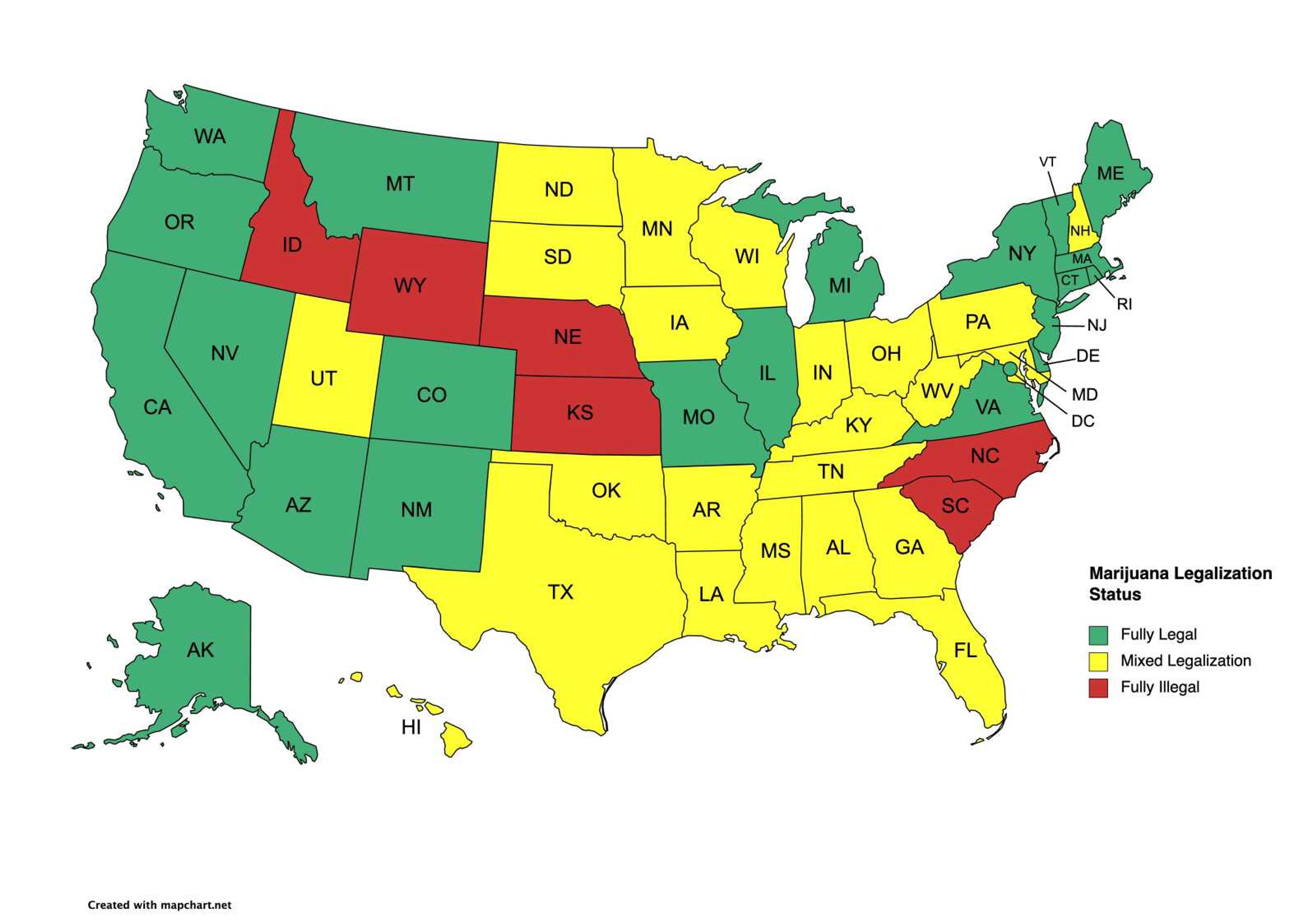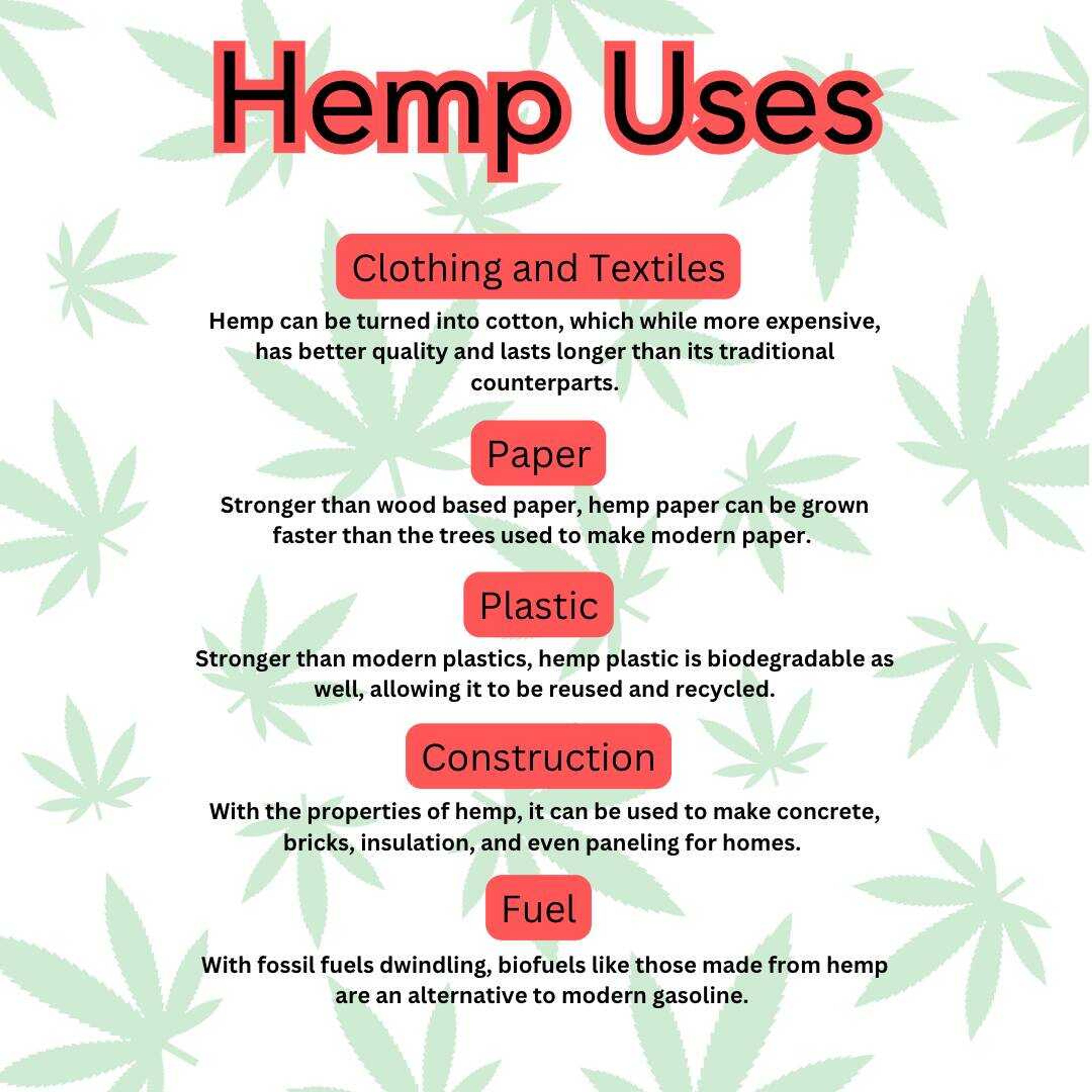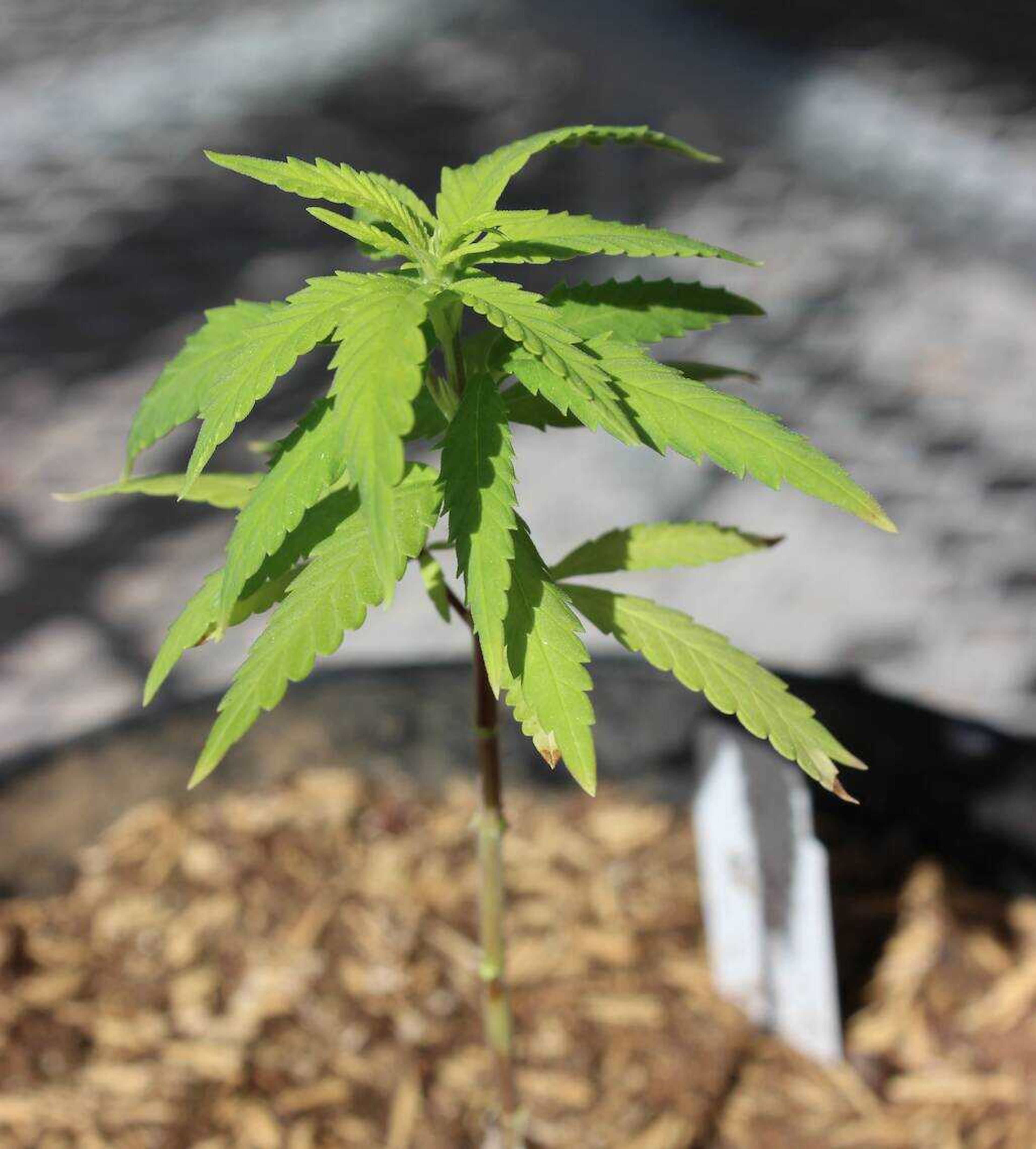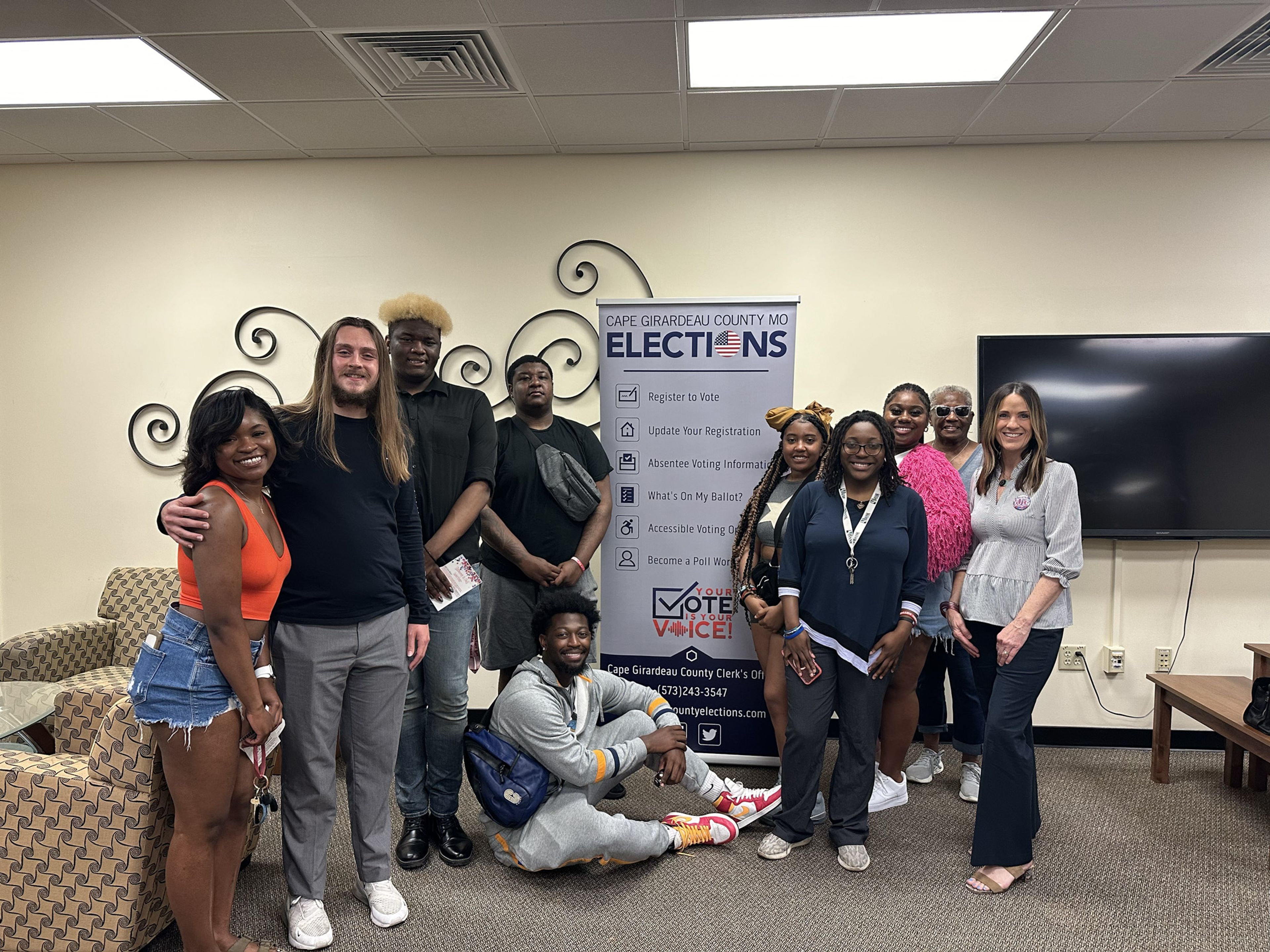The United States has had a strained relationship with cannabis throughout the past century, but in the past five years, public attitudes have been shifting.
In the 1930s, it became illegal to possess and sell marijuana in the United States, due to anti-narcotic laws and anti-immigration sentiments that were popular at the time. Through the Marijuana Tax Act of 1937, the use of marijuana required a hefty tax that would be punishable with prison time for tax evasion. While the conflict over this decision is a storied one, evidenced by the War on Drugs started by the Nixon Administration in 1971 and re-initiated by the Bush Administration in 1989, its conclusion is more recent.
After the plant was legalized by the state of California for medicinal use in 1996, many states followed suit. In 2012, both Colorado and Washington legalized marijuana for recreational use, and according to NCSL.com, and as of 2023, 36 states have legalized it for medicinal or recreational purposes.
In 2018, Missouri residents voted to legalize marijuana medically, and in 2023, they voted again to legalize it recreationally, a decision with consequences that may take years to understand fully.
One of the most common uses for marijuana is through use of the narcotic portion of the plant. According to the National Institutes of Health, cannabis can cause a “pleasant euphoria and a sense of relaxation. Other common effects, which may vary dramatically among different people, include heightened sensory perception — e.g., brighter colors — laughter, altered perception of time and increased appetite.”
While the health consequences are still being researched, the conflict this decision has had with law enforcement and how it has operated throughout the past several decades is also relevant. Southeast Missouri State University criminal justice, social work and sociology professor Carl Kinnison said the change to the law has already had an effect on the tools used by law enforcement, especially K-9s.
“The majority opinion is that once you train a dog to detect a specific odor, like marijuana, then you cannot untrain them. Therefore, if agencies have K-9s that are trained for detecting marijuana, that becomes an issue; law enforcement cannot determine if that is a hit on marijuana or some other drug,” Kinnison said.
Missouri has already seen the effects of this firsthand. According to an article by KCTV, three of the six dogs in Kansas City, Missouri, that are trained for detecting drugs have retired early.
Cannabis legislation has had an even greater effect on those who have served or are currently serving time for drug-related offenses. Criminal Justice sophomore Lauryn Sandan said while marijuana’s legalization will change the way law enforcement handles its work, it will also have an effect on those who were incarcerated for drug offenses prior to its legalization.
“You can’t keep them in jail now that it’s legalized,” Sandan said. “At that point, what are you in jail for? So, legalizing it gives them a chance to have a normal life.”
Thanks to the passage of Missouri Amendment 3, records for nonviolent drug offenses of 3 pounds or less of marijuana will be expunged. According to KCUR, expungement began Dec. 8, 2022, affecting more than 500 incarcerated residents and those who have served their sentence but have a conviction on their record.

While focus on marijuana has largely been on the narcotic properties of the drug, legalization has also opened the doors for hemp research.
Marian J. Lee of the Food and Drug Law Institute wrote that hemp is derived from the same plant as marijuana, the cannabis sativa plant, but contains less than .3% THC, the psychoactive drug found in marijuana. In the past, it was used primarily in the manufacturing of clothes, ropes and even sail cloths. Today, the research goes beyond that.
Professor of agriculture Sven Svenson teaches classes for the Agribusiness: Horticulture and Cannabis major at SEMO. Svenson said the purpose of the major is to explore the possibilities that hemp research opens up and to find new ways to create sustainability. Through both in-class work and hands-on experience in the greenhouses and research fields, students have a chance to learn first-hand the applications that come along with hemp.
“The 2014 farm bill started a program where the universities could research the plant again, but the plants that don’t have the THC in them,” Svenson said.
In the new age of technology, new uses have also emerged. Svenson said one of the most exciting uses is in the manufacturing of plastics.
“There’s no reason for us to make plastic out of petroleum and pollute the planet for the next 50,000 years. You can just throw the [hemp] plastic into a compost bin and be done,” Svenson said.
According to PlantSwitch, hemp plastic is 100% biodegradable and has the same tensile strength as many of the modern plastics used today.
For more information on the hemp industry, listen to the audio story below.
With more than half of the states in the United States legalizing the drug in some capacity, the effects on health have become a topic of discussion.
Though public sentiment has changed, marijuana use is not without risk. According to the National Institute on Drug Abuse, physical effects from long-term use can result in breathing problems from irritation to the lungs from smoke, a higher risk of heart attacks for elderly people and those at risk of heart attacks, and developmental issues in children who are exposed to marijuana and THC at an early age.
In a report by the National Institutes of Health, the risk of developing schizophrenia increased for those with cannabis use disorder, with a stronger correlation found in young men with the disorder.
Yet, marijuana has had some positive effects. According to NYC Health, marijuana use by adults can partially or completely alleviate chronic pain, chemotherapy-induced nausea and multiple sclerosis spasticity symptoms.
While the health risks and benefits of marijuana will continue to be uncovered as time goes on, there are still steps any person who is deciding to use should keep in mind.
The first is to avoid driving a vehicle while using marijuana. Just like alcohol, impairment can lead to a higher risk of accident and result in a DUI. The second is to keep in mind frequency of use. Too much in a short period of time can have negative effects on mental and physical health, while frequent use over a long period of time can result in long-term mental and physical health complications. Third, avoid mixing cannabis with other mind altering substances. Effects from both can become unpredictable and can cause serious harm. Finally, keep away from minors, especially cannabis that looks like other foods, such as edibles. Just like any drug or alcohol, consumption by minors can have negative effects on their development.






